From Devotion to Disillusionment: Why People Are Removing Their Salesforce Tattoos—and What SaaS Giants Need to Learn
A Love Affair with Salesforce and Dreamforce 2018
In the fall of 2018, I found myself amidst the electrifying energy of Dreamforce, Salesforce’s flagship event that brings together an entire ecosystem of innovation, technology, and community. It wasn’t just another tech conference; it was a celebration of what the Salesforce brand had come to represent—a powerful force in the digital transformation of businesses worldwide.
Dreamforce 2018 attracted over 170,000 attendees from all over the globe, underscoring the influence and reach of Salesforce in the tech world.
I was swept up by the passion and camaraderie of the Trailblazers, a community unlike any other, where individuals from all walks of life united under a shared vision of creating change and driving innovation.
The vibrant sessions, the inspiring keynotes, and the palpable excitement in the air solidified Salesforce’s place not just in my career, but in many people’s very identity. So much so, that some chose to immortalize that connection with a tattoo—a symbol of their commitment to the platform, the brand, and the community.

Dreamforce 2018 – San Francisco, USA
However, recently, two close friends reached out to share that they are having their Salesforce tattoos removed or tattooed over. They no longer feel the same connection to the company and have decided to move on from identifying with a brand that, while significant at one point in their lives, no longer aligns with their values or beliefs. It’s a poignant reminder of how much our professional identities can evolve, and how even the most meaningful symbols can change as we grow.
From Visionary to Unwieldy
In recent years, Salesforce has started to struggle, becoming almost the antithesis of what its founding vision once promised. The product, once celebrated for its innovation and user-friendliness, has grown increasingly unwieldy and complex. As Salesforce proliferated across industries, its user base expanded to over 150,000 companies, generating vast amounts of digital marketing and communication data. This data deluge began to overwhelm end customers, leading to what Gartner refers to as “digital fatigue,” where the sheer volume of content leads to disengagement. What was once a tool for engagement and connection now risks becoming just another layer of noise in an already crowded digital landscape, reducing the impact these platforms once had.
During my time working in the business development function at a large UK government outsourcer, I witnessed firsthand how Salesforce’s over-expansion could hinder rather than help. The company was heavily overtooled, with Salesforce at the center of this issue.
According to a study by Forrester, nearly 40% of sales reps report spending more time on administrative tasks, including CRM data entry, than they do engaging with customers.
Business development, which should have been focused on building relationships and driving growth, became enslaved to the platform. Instead of spending time in the field, engaging with potential clients and creating value, representatives were bogged down by days of manipulating outdated and cumbersome data within Salesforce. The system, once a powerful enabler, had become a burden—a testament to how far it had strayed from its original purpose.
When Technology Becomes a Hindrance
As I continued to engage with Salesforce, both professionally and personally, the disillusionment began to set in. What was once a tool that I passionately advocated for started to feel more like a barrier than an enabler. The increasing complexity of the platform didn’t just affect business development—it permeated every aspect of its use. According to a report by Nucleus Research, for every dollar spent on CRM, companies see an average return of $8.71. However, as Salesforce became more complex, the ROI for many businesses started to decline due to the high costs associated with managing the system and the time spent on non-revenue-generating tasks.
Processes that were once streamlined and efficient became bogged down in layers of unnecessary features and convoluted workflows.
For many businesses, Salesforce has become a tool that requires constant maintenance and significant resources just to keep up with its ever-expanding capabilities. The average cost of implementing and maintaining Salesforce can range from $5,000 to $80,000 per year for small to mid-sized businesses, with larger enterprises spending significantly more. This shift has not only impacted the user experience but has also led to a disconnect between what the platform promises and what it actually delivers.
The endless customization options and the push for deeper integration into every facet of business operations have created a scenario where the platform’s sheer scale has overshadowed its original intent—helping businesses build meaningful connections with their customers. Instead, many find themselves tangled in a web of data, analytics, and automation that, while powerful, often feels more like an obstacle than a solution.
The Rise of AI-Native Alternatives: A New Era of CRM
Amidst this growing frustration with Salesforce, the landscape of CRM solutions has been rapidly evolving, driven by widespread investment in AI-native technologies.
The global AI in the CRM market is projected to reach $72.9 billion by 2027, highlighting the significant shift towards AI-driven platforms.
New CRM alternatives are emerging quickly, offering lightweight, efficient software where machine learning is seamlessly integrated into every function. These platforms leverage generative AI to automate the heavy lifting, producing highly customized and accurate client content with minimal effort. This allows users to focus on what truly matters—building human relationships grounded in transparency and trust.
The new wave of AI-powered CRM solutions is not only smarter but also more cost-effective.
According to McKinsey, companies that adopt AI-driven CRM systems can reduce operational costs by up to 30% while improving sales productivity by 15%. They offer a lean and efficient approach that passes significant savings on to clients.
Unlike the bloated, complex systems of the past, these modern platforms make it easy to assess actual ROI and drastically reduce the total cost of ownership (TCO). They eliminate the need for dedicated teams just to manage the system, freeing up resources to be better spent on strategic initiatives and direct client engagement. This shift represents a fundamental change in how businesses approach CRM, moving away from cumbersome legacy systems towards agile, intelligent solutions that truly enhance, rather than hinder, customer relationships.
A Return to Core Principles: The Essence of CRM
Ironically, these new AI-native CRM solutions are embodying the very core principles that Salesforce once championed. At its inception, Salesforce was a business focused on nurturing and developing authentic human relationships through empathy. It was a platform where data could be harnessed to drive accuracy, enhance the quality of engagement, and effectively leverage people’s time, ensuring that good business outcomes were achieved for all participants.
The original vision was clear: technology should empower users, not overwhelm them, and should facilitate meaningful connections rather than drown them in data.
However, as Salesforce evolved, it seems to have lost sight of these foundational values. The complexity and scale of the platform have made it difficult for users to maintain that crucial focus on human relationships. In contrast, the new generation of CRM tools is bringing the industry back to those roots—using AI to streamline processes, enhance personalization, and, most importantly, free up time for what really matters: building and sustaining genuine, trust-based relationships.
This return to a simpler, more focused approach is a refreshing reminder of what CRM should be—a tool to facilitate human connection, not replace it.
The Challenge for Dominant SaaS Vendors
It’s not just Salesforce that should be concerned. All large-scale, dominant SaaS vendors who continue to rely on aging proprietary stacks should be worried. While CRM is one market where this shift is evident, the innovation motion fueled by AI is occurring across all technology sectors. The traditional models of software delivery and management, which these vendors have long relied upon, are being disrupted by a new wave of AI-enabled, accelerated, and decentralized teams and systems.
These emerging technologies are allowing smaller, more agile companies to rapidly build highly effective systems that are both functionally superior and commercially attractive. The benefits are clear: clients gain back control over their operations and security, avoiding the pitfalls of vendor lock-in and the high costs associated with maintaining legacy systems.
According to Gartner, by 2025, more than 50% of enterprises will have replaced or augmented their existing SaaS applications with AI-driven solutions that offer more flexibility and lower costs.
This trend is creating a seismic shift in the technology landscape, where the balance of power is moving away from monolithic, centralized SaaS providers and towards lean, innovative solutions that are more responsive to client needs. As AI continues to advance, these new platforms are expected to not only match but exceed the capabilities of traditional systems, offering businesses unprecedented levels of customization, efficiency, and control.
The message is clear: adaptability and innovation are no longer optional; they are essential for survival in this rapidly evolving market.
Ian

Ian Smith, COO, Lighthouse Technology

